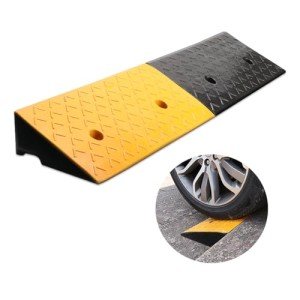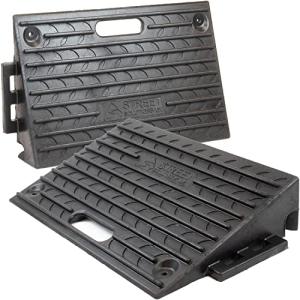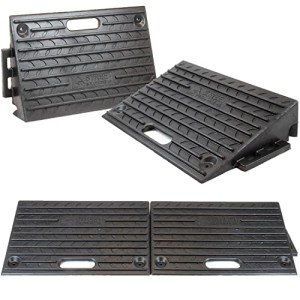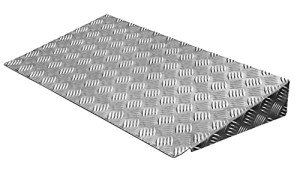Understanding Self-Adhesive PVC Wheelchair Ramp Transition Strips
In today's world, accessibility is a fundamental right, and ensuring that spaces are navigable for everyone is crucial. Wheelchair ramps serve as a vital solution for individuals with mobility challenges, allowing them to traverse different surfaces with ease. One effective way to enhance the functionality of wheelchair ramps is through self-adhesive PVC transition strips. This guide explores the significance, features, and benefits of these transition strips, along with practical tips for their application.
What is a Self-Adhesive PVC Wheelchair Ramp Transition Strip?
A self-adhesive PVC wheelchair ramp transition strip is a flexible strip made from polyvinyl chloride (PVC) that is designed to provide a smooth transition between different flooring surfaces. These strips are typically used to connect a wheelchair ramp - which may have a different surface than the surrounding area - to ensure a seamless experience for wheelchair users. Their self-adhesive backing allows for easy installation without the need for additional tools, making them an accessible option for enhancing wheelchair ramp safety.
Features of Self-Adhesive PVC Transition Strips
-
Durability: PVC is known for its resistance to wear and tear. Transition strips made from this material can withstand heavy foot and wheelchair traffic, making them a long-lasting choice.
-
Adhesive Backing: The self-adhesive feature simplifies installation. Users merely need to peel off the backing and press it onto a clean, dry surface.
-
Variety of Sizes: Transition strips come in various widths and lengths, catering to different ramp sizes and specific needs of individuals.
-
Color Options: They are available in a range of colors, allowing for customization and the ability to choose strips that match or contrast with existing decor.
-
Accessibility Compliance: Designed to meet ADA (Americans with Disabilities Act) guidelines, these strips help ensure safe and compliant access for individuals using wheelchairs.
Benefits of Using Self-Adhesive PVC Transition Strips
-
Improved Safety: Transition strips minimize the risk of tripping or falling, providing a smooth and even surface for wheelchair users, caregivers, and pedestrians alike.
-
Enhanced Mobility: The strips facilitate easier movement by bridging gaps between different surfaces, such as carpet, tile, or concrete.
-
Cost-Effective: Self-adhesive PVC transition strips are often more budget-friendly than other types of flooring modifications or installations.
-
Easy Maintenance: Made from PVC, these strips are easy to clean and resistant to stains, ensuring a neat appearance over time.
-
Time-Saving Installation: As they don’t require complex tools for installation, applying these strips can be completed quickly, minimizing disruption.
Steps to Install Self-Adhesive PVC Transition Strips
Installing a self-adhesive PVC wheelchair ramp transition strip is straightforward. Here’s a simple guide to ensure proper fitting and longevity:
Materials Needed:
- Self-adhesive PVC transition strip
- Utility knife or scissors
- Measuring tape
- Cleaning supplies (mop, cloth, or vacuum)
Installation Steps:
-
Measure the Area: Begin by measuring the length and width of the area where the transition strip will be placed. This will ensure you select the correct size.
-
Prepare the Surface: Clean the area thoroughly to remove any dirt, dust, or debris. A clean surface ensures that the adhesive adheres properly.
-
Cut the Strip: If necessary, use a utility knife or scissors to cut the transition strip to the desired length.
-
Peel and Stick: Carefully peel off the backing from the adhesive side and align it with the edge of the flooring. Press it down firmly for proper adhesion.
-
Finish: Once installed, walk over the transition strip to ensure it is securely in place and there are no loose edges.
Maintenance Tips
- Regular Cleaning: Wipe down the strips with a damp cloth and mild soap regularly to prevent buildup and stains.
- Inspect for Damage: Periodically check for wear and tear, replacing the strips if the adhesive loses its grip or if they become damaged.
- Ensure Proper Adhesion: If the edge begins to lift, re-press it firmly into place or use additional adhesive if necessary.
Frequently Asked Questions (FAQs)
1. How long do self-adhesive PVC transition strips last?
The lifespan of these strips varies based on usage and conditions, but with proper installation and maintenance, they can last several years without significant wear.
2. Are self-adhesive PVC strips suitable for outdoor use?
While many PVC transition strips are designed for indoor use, some are suitable for outdoor applications as well. It’s essential to check the manufacturer’s specifications before installation.
3. Can I use self-adhesive PVC transition strips on uneven surfaces?
For the best results, the surface should be as flat and even as possible. If the underlying surface is uneven, it may affect the strip’s longevity and effectiveness.
4. Do self-adhesive PVC transition strips damage flooring when removed?
Typically, these strips are designed to remove cleanly without damaging the underlying surface. However, it’s advisable to test on a small area first, especially on finished flooring.
5. What is the cost of self-adhesive PVC transition strips?
The price can vary widely based on size, brand, and features, but they are generally considered an affordable solution for improving accessibility.
Self-adhesive PVC wheelchair ramp transition strips are a pivotal addition to any accessible environment. They not only improve safety and ease of movement but also cater to aesthetic preferences. With their durability, ease of installation, and maintenance, these transition strips represent a practical investment in accessibility. Whether for home or public spaces, they play a crucial role in ensuring that everyone can navigate their environment with dignity and confidence.






